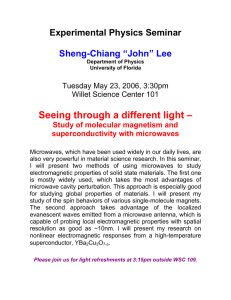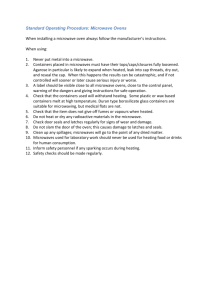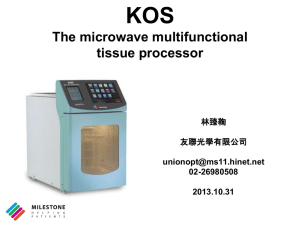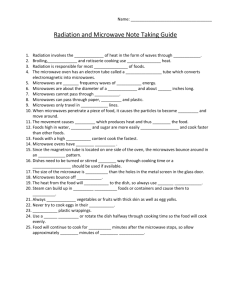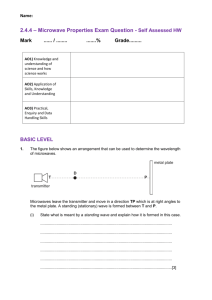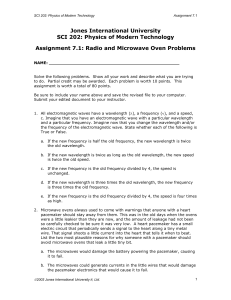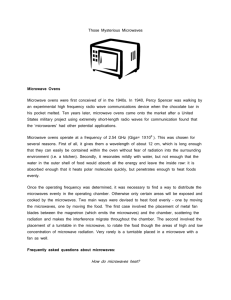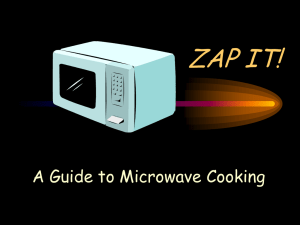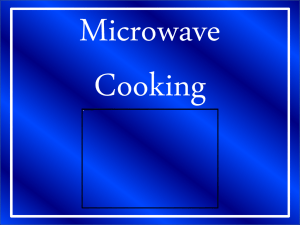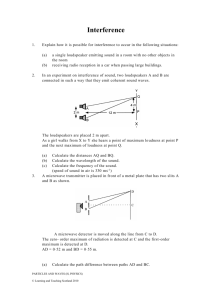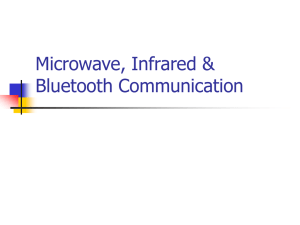Chemistry
advertisement
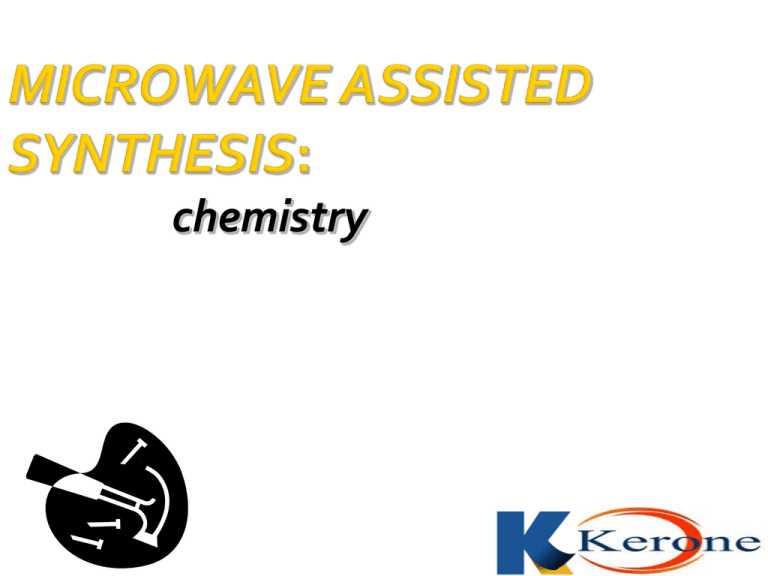
chemistry Application of microwaves in chemical transformation was published for first time in 1986. Now the MW assisted synthesis has emerged as new green tool in synthesis of organic compounds. As the knowledge and understanding is increasing, new applications are exploring in other fields of chemical science. This presentation is focused upon the understanding of basic mechanisms of MW heating and their utility in chemistry. It also focuses on environmentally benign aspects of microwave heating including our need and responsibility. Microwaves are electromagnetic waves range from 1 cm to 1 m i.e. 30 GHz to 0.3 GHz. Ionic bond ~ 7.6 eV Covalent [ C-H] ~ 4.28 eV Hydrogen bond ~ 0.04 – 0.44 eV Brownian motion ~ 1.7 x 10-2 eV Microwave 2.45 GHz ~ 1.6 x 10-3 eV Thus microwave photons are not able to break even hydrogen bond. The molecular dipoles in entire bulk tend to align with electric field of the micro wave and rotate or oscillate to follow the changing field. This Movement of molecules result into the collision and friction between molecules. And the Kinetic energy is lost as thermal energy. This is called dielectric heating which is a collective phenomenon of the bulk. Charged particles (ions) oscillate under the influence of oscillating electric field of microwaves and they collide with other molecules and atoms. The kinetic energy of ions is lost in the form of heat. Gases cannot be heated by microwave due to larger interparticle distance (hence no friction). In solids, as molecules can not move freely, no heating occurs by microwaves. In high frequency microwaves the molecular dipole has no enough time to realign and in low frequency microwaves the reorientation is too slow. In both the cases no heating occurs. The frequency 2.45GHz is the optimum frequency, which lies between these two extremes, is usually used. Microwave heating effect is not a property of an individual molecule but a collective phenomenon of bulk. Using microwaves solvents can be heated well above their Boiling points for extended time. Super heating is probably due to (1) Microwaves interact directly with molecules of entire volume of solvent leading to sudden and quick rise of temperature. (2) Nucleation points on wall of container are likely the coolest part of system hence vaporization (release of energy) is limited to top surface of liquid even on or above the b.p. This effect helps Water to act as an Organic solvent. Reaction time is reduced from hours to minutes when assisted by microwaves. Under microwave irradiations, high and intense temperature can be achieved very quickly and liquids are super heated. According to Arrhenius equation, K=A exp (-ΔG°/RT), a simple rule is that higher is the temperature, higher is the reaction rate. While following the oscillations of electric field of microwaves, reagent molecules can arrange in favorable mutual orientation relatively more times per second in whole of the reacting volume. This increases the probability of molecular collisions in correct orientation and is related to the factor A in Arrhenius equation: K=A exp (-ΔG°/RT), This effect can be utilize in photochemistry also. If a solution contains more than one component only that component which can interact with microwave energy is selectively heated. By using poorly absorbing solvent, bulk temperature can be kept low despite the reaction proceeds at higher rate at heated heterogeneous catalyst. 99% to 100% Faster & milder Use of Electrodeless Discharge Lamp in photochemistry. Efficient preparation of organometalic compounds. Greener, flexible methods to prepare nano -particles of metals and metal oxides. Polymer synthesis. Enzyme chemistry. Atom economy: Greater yield, lesser wastage. Clean reactions: Less byproducts, lesser purification burden. Green solvents: H2O, EtOH and reusable IL. Less or no solvent: 0.5 - 5 ml per reaction & neat condition. Low energy input: 50W, max 300W and easy to start or stop input of energy into the reacting substance only by a switch. Reduced derivatives: Use of blocking agents, protection/deprotection require additional reagents . But in MW methods either there is no need of such temporary modifications or milder conditions can be used. Rapid reactions: Rapid method development. Microwave heating technique offers Simple, One- pot, Clean, Faster, Efficient and Economic methods for chemical transformation. It is the technology of future. We can say that it is a HAMMER in our toolkit and all the problems appear like nails.
